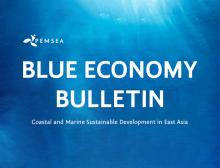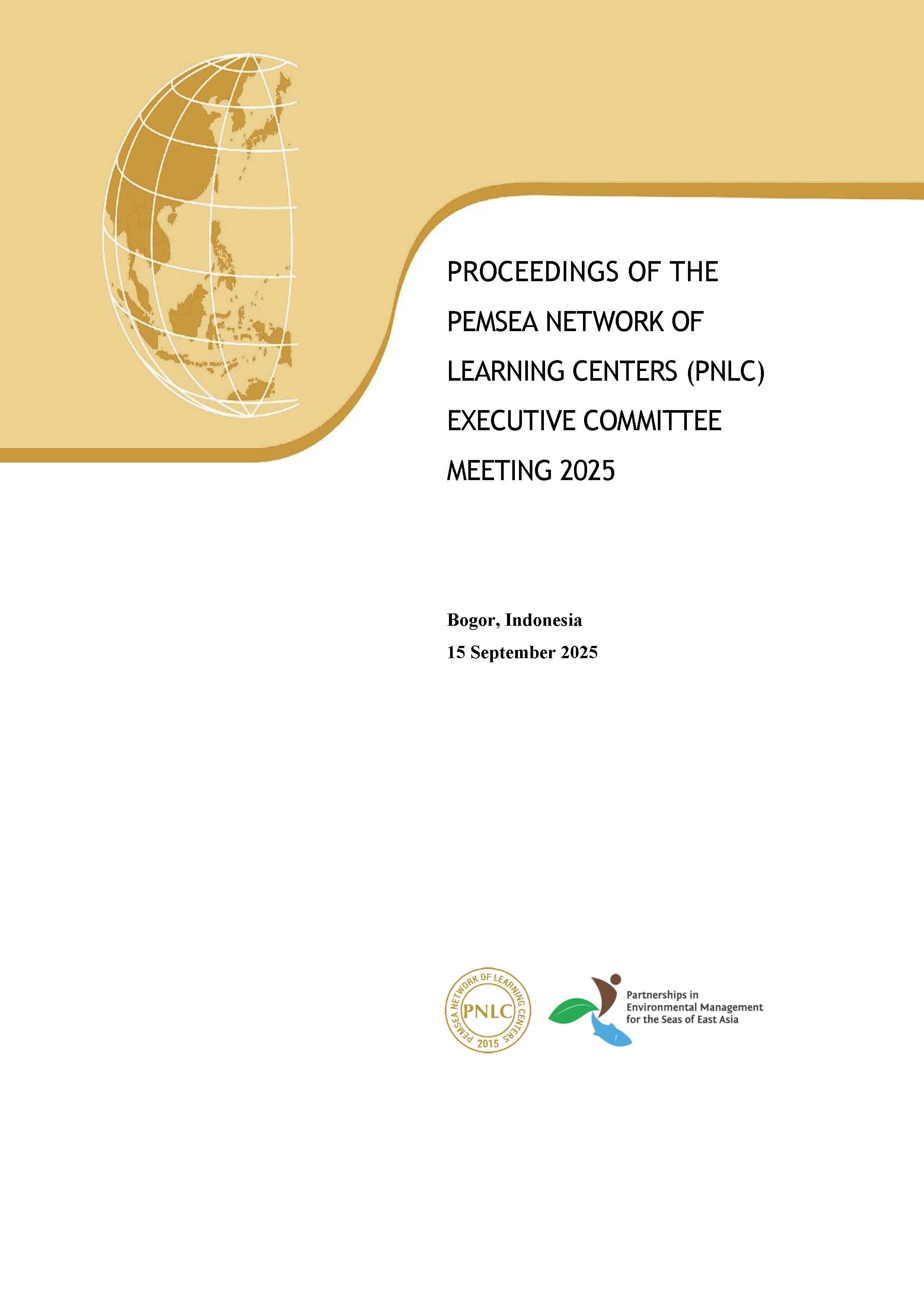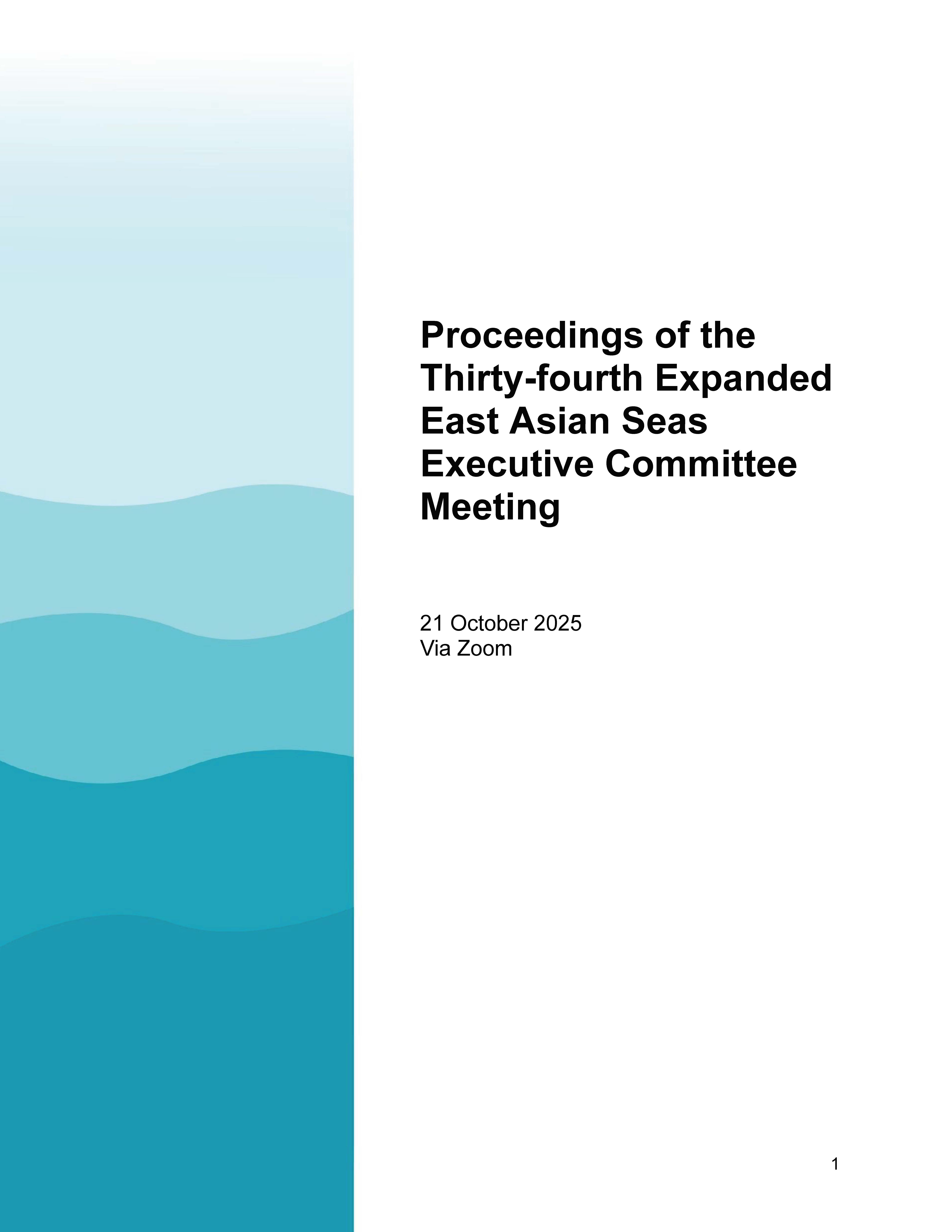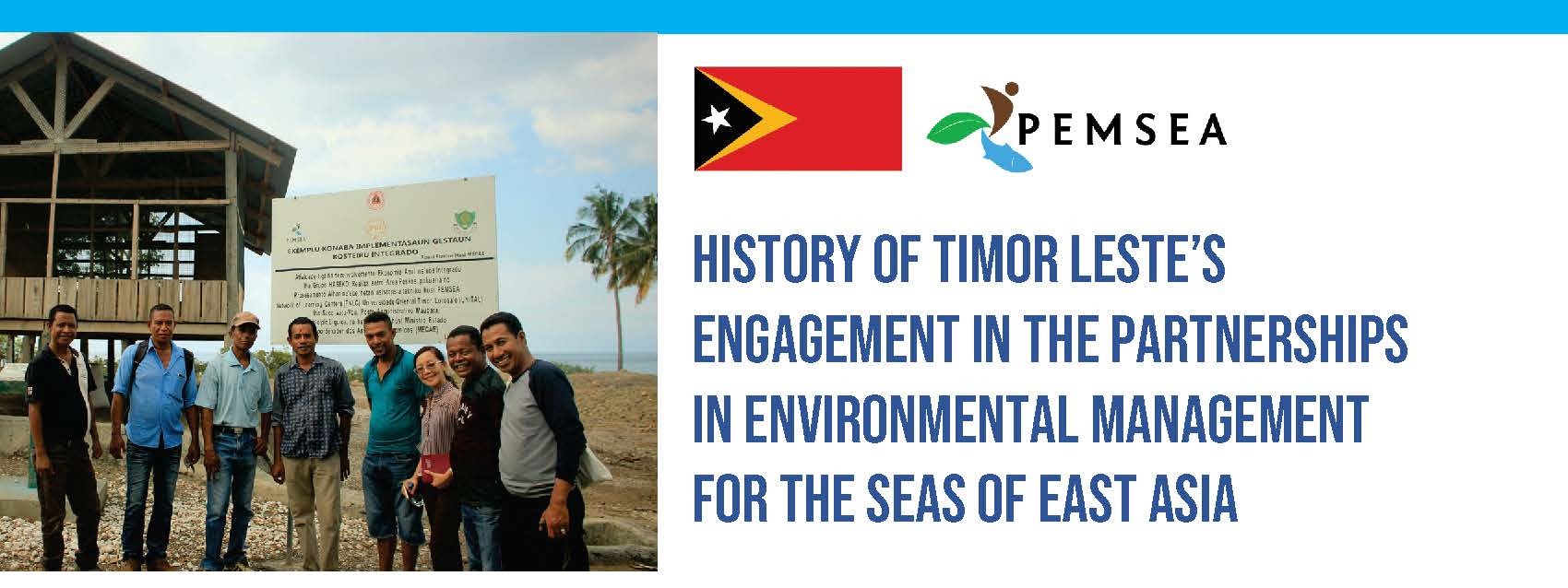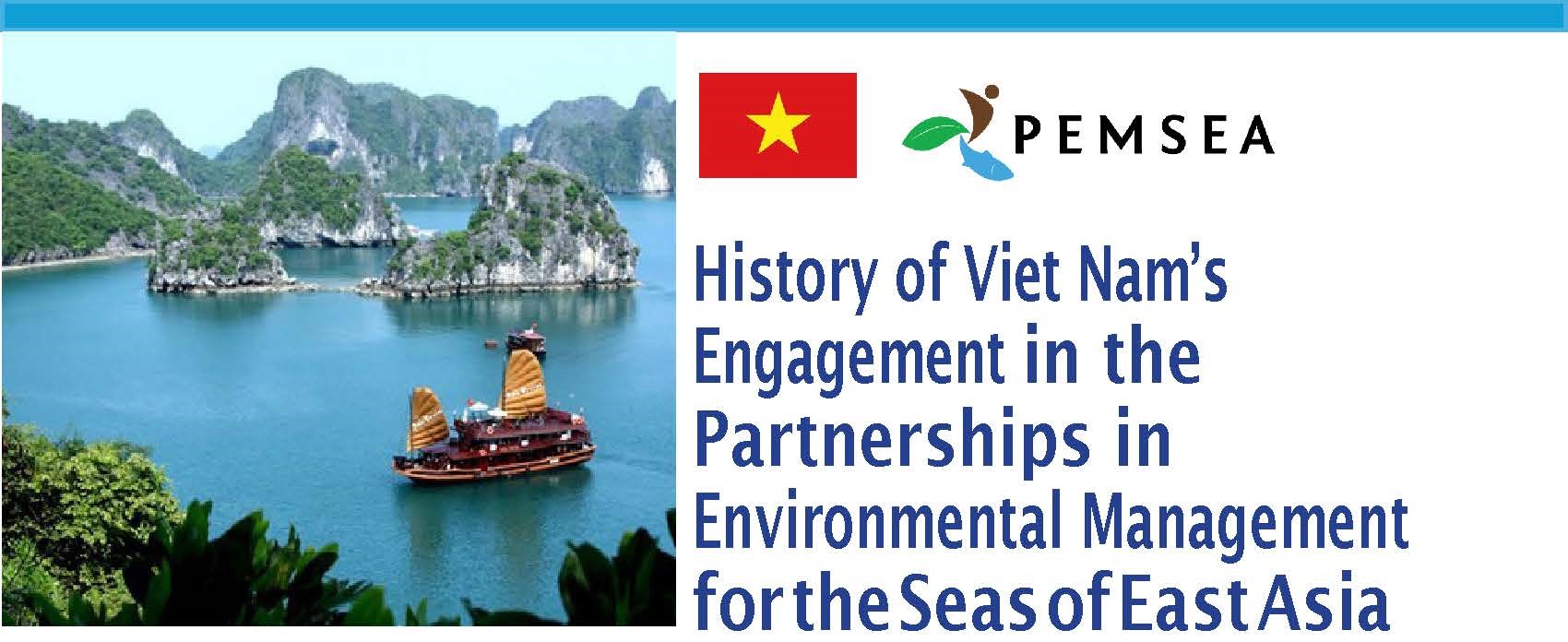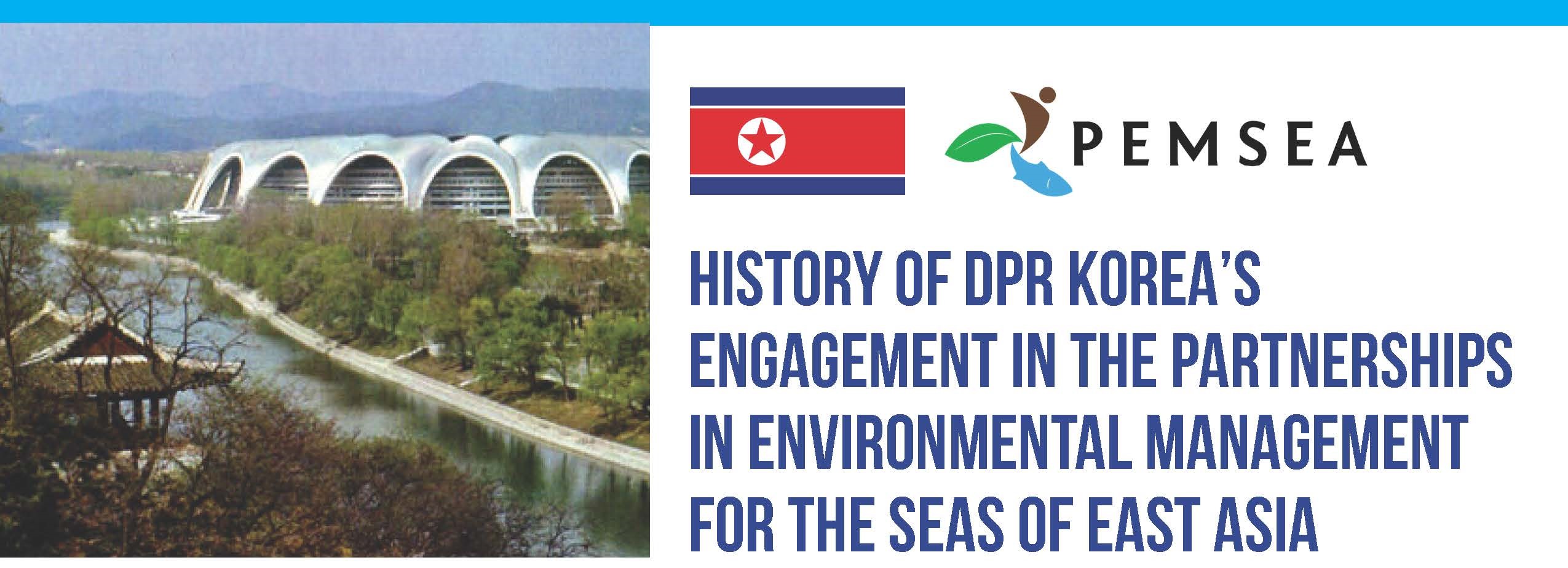
Breadcrumb
Blue Economy Bulletin April 2018
PUBLICATION DATE:
Monday, April 30, 2018
PUBLICATION TYPE:
Magazines and Newsletters
STATUS:
Available (Newsletter)
DESCRIPTION:
Progress towards a sustainable blue economy is becoming a more important issue, not only for specialists and policy-makers, but also for civil society, as blue economy issues continue to increase within the public awareness. PEMSEA and its partners, who this year celebrate 25 years of progress in working towards a shared vision of healthy oceans, people and economies, welcome you to the second Blue Economy Bulletin of 2018!
PEMSEA’s triennial East Asian Seas Congress, to be held in Iloilo City, Philippines, from November 27-30, is drawing closer. With the theme “25 Years of Partnerships for Healthy Oceans, People and Economies: Moving as One with the Global Ocean Agenda”, the EAS Congress 2018 is expected to engage over 1,000 participants from national and local government, academia, business, international organizations and NGOs. It will feature an International Conference and Environmental Exhibition, the Fifth EAS Youth Forum (YF5), PEMSEA Network of Local Governments (PNLG) Forum 2018, and will culminate with the Sixth Ministerial Forum. The call for applications to the Fifth EAS Youth Forum (YF5) has been released, and PEMSEA asks any youth from the region aged 18-25 who are working or interested in the sustainable development of coasts and oceans to consider applying.
Real change happens on the ground, so we were pleased that PEMSEA’s work in Bataan, Philippines, was featured in a video celebrating protection of our oceans for Earth Day 2018. PEMSEA also welcomed recent developments in the Philippine’s Romblon province, where Local Government Units (LGUs) have incorporated integrated coastal management thinking into their development plans.
In global news, IMO member states agreed to a 50% reduction from 2008 levels in greenhouse gas emissions by 2050. The World Ocean Summit 2018 saw the release of 14 Sustainable Blue Economy Finance Principles, while over 100 global corporations had emissions reductions plans approved by the Science Based Targets initiative. The U.S. called for marine mammal bycatch mitigation plans from fisheries by 2022 as a requirement for these fisheries to access U.S. markets. Scientists discovered an enzyme that can digest polyethylene terephthalate (PET), a key component of modern plastics, which could prove to be a crucial new tool to address ocean plastic pollution.
A consultative committee in the Philippines intends to strengthen environmental rights in a new constitution, and the Philippine Commission on Human Rights (CHR) held its first hearing against major corporate carbon emitters. Due to overcapacity, the Philippines and Thailand have both closed popular tourist destinations for a number of months. Indonesia plans to launch an excise on plastics in May and has deployed its military to clean up the Citarum river, while China’s Environment Ministry has announced that it intends to tackle plastic pollution in the Yangtze river.
Follow the us on Facebook and Twitter (@PEMSEA) for the latest updates. We welcome your feedback, and please let us know if there are other blue economy topics you would like to see in future newsletters and programs.
RELATED PUBLICATIONS
PEMSEA NETWORK OF LEARNING CENTERS (PNLC) 2025 Executive Committee Meeting Proceedings
The 2025 PNLC Executive Committee (PNLC EC) Meeting was organized by PNLC Secretariat on 15 September 2025 in Bogor, Indonesia. It was participated by Prof. Yonvitner of the Center for Coastal and Marine Resources Studies of the IPB University (CCMRS-IPB) and President of the PNLC, Dr. Fang Qinhua, Deputy Director of the Coastal and Ocean Management Institute of Xiamen University (COMI-XU) and Vice-President of the PNLC, and Ms. Aimee T. Gonzales, PEMSEA Resource Facility (PRF) Executive Director as members of the PNLC Executive Committee. Ms. Isdahartatie PNLC secretariat Coordinator/ CCMRS-IPB University, Ms. Nancy Bermas from PRF, Francesca Cortez (PRF Secretariat Assistant) and Lusita Meilana, PNLC Secretariat staff. The meeting was chaired by Prof. Yonvitner. Ms. Isdahartati served as the Secretariat of the meeting.
The following supporting documents are annexed to these proceedings:
- Annex 1: Meeting Agenda / Program
- Annex 2: Links to the meeting documents, presentation and photos
- Annex 3: List of participants
Proceedings of the Thirty-fourth Expanded East Asian Seas Executive Committee Meeting
The Expanded East Asian Seas (EAS) Executive Committee convened its 34th Executive Committee Meeting on 21 October 2025 online via Zoom. The meeting was attended by EAS Partnership Council Chair Attorney Jonas Leones; Intergovernmental Session Chair Mr. Le Dai Thang; Intergovernmental Session Co-Chair Dr. Xinwei Yu; Technical Session Chair Dr. Suk-Jae Kwon; and Technical Session Co-Chair Dr. Wakita Kazumi. The PEMSEA Resource Facility (PRF), led by Executive Director (ED) Ms. Aimee T. Gonzales, served as Secretariat to the meeting. PEMSEA Country Partners in attendance included national focal points and representatives from Cambodia, China, Indonesia, Japan, Lao PDR, the Philippines, the Republic of Korea, Singapore, Timor-Leste, and Viet Nam. Non-Country Partners present included representatives from the ASEAN Centre for Biodiversity, Ipieca GISEA, Oil Spill Response Limited, National Marine Hazard Mitigation Service, International Center for Environmental Management of Enclosed Coastal Seas (EMECS), PEMSEA Network of Local Governments, and Korea Institute of Ocean Science & Technology, among others. Online observers included staff from the PEMSEA Resource Facility and UNDP.
History of Timor Leste's engagement in PEMSEA
Since joining PEMSEA in 2006 through the signing of the Haikou Partnership Agreement, Timor-Leste has made remarkable progress in advancing sustainable coastal and ocean governance under the Sustainable Development Strategy for the Seas of East Asia (SDS-SEA). Over the years, the country has implemented Integrated Coastal Management (ICM) programs in key municipalities, developed national ocean and coastal policies, and strengthened inter-agency collaboration for marine protection and livelihood enhancement. Through its participation in regional initiatives such as ATSEA and the Marine Plastics ODA Project, Timor-Leste continues to demonstrate strong commitment to ecosystem-based management, blue economy development, and regional cooperation for healthy and resilient seas.
History of Viet Nam's engagement in PEMSEA
Since 1993, Viet Nam has been an active partner in advancing sustainable coastal and ocean governance in the East Asian Seas through PEMSEA. From pioneering Integrated Coastal Management (ICM) in Da Nang to establishing the Viet Nam Administration of Seas and Islands (VASI), the country has institutionalized ICM in national policy and legislation while fostering regional cooperation through leadership roles in PEMSEA bodies and ministerial forums. Viet Nam’s consistent participation in key initiatives and adoption of major regional declarations underscore its strong commitment to blue economy development, marine ecosystem protection, and the long-term implementation of the Sustainable Development Strategy for the Seas of East Asia (SDS-SEA).
History of DPR Korea's Engagement in PEMSEA
Since joining the regional GEF/UNDP/IMO Marine Pollution Prevention in the East Asian Seas (MPP-EAS) project, the DPR Korea has actively advanced Integrated Coastal Management (ICM) through the establishment of the Nampho demonstration site and the National ICM Training Center at Kim Il Sung University. The country has consistently participated in key regional forums, including the East Asian Seas Congresses and Ministerial Forums, adopting major regional declarations and frameworks such as the SDS-SEA and Manila Declaration. Its engagement reflects a sustained commitment to regional cooperation, marine pollution prevention, and sustainable coastal development under PEMSEA.
